Classroom Setup That Supports Literacy
Today was such an exciting day! It was the first of 10 visits to Gordon Terrace Elementary School. What I loved is that we were submersed in a lesson with the students and teacher to see what teaching literacy to a grade 2/3 class actually looks like! I learned so much from the teacher in just one short hour about classroom setup in relation to supporting literacy in the classroom. Below I will list 4 key considerations I learned today about promoting literacy, especially through classroom set up.
1. Classroom Library
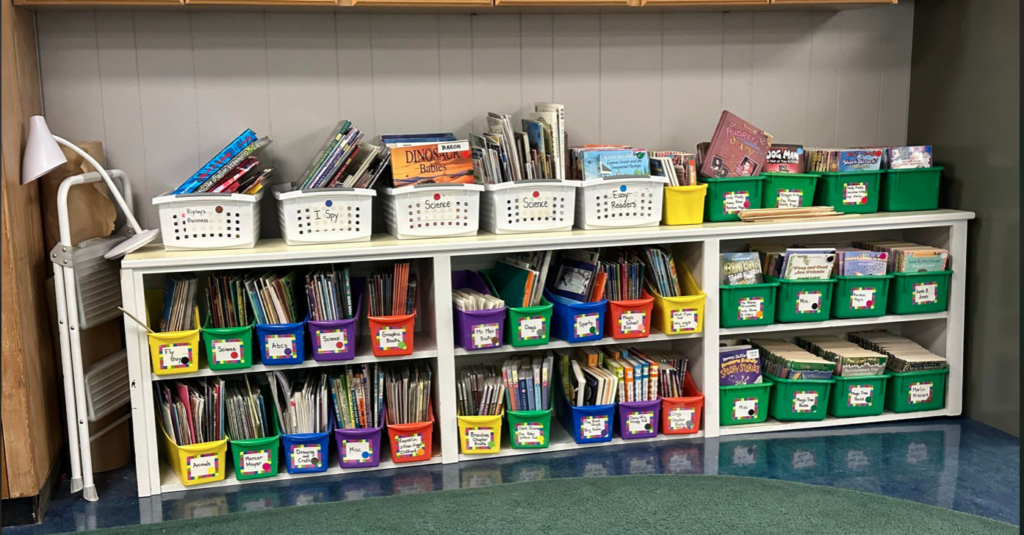
Classroom Library Considerations:
a) Student Interest: Have a classroom library like the one pictured above that is categorized into genres. This will allow students to pick a book based on their interests. We know through research that motivation is key, well, here is a way to bring that into the classroom!
b) Variety: Have a variety of books available such as picture books, graphic novels, class novels, fact books ect..
c) Classroom Management: Now, do not forget about the classroom management piece of the library. This classroom (as pictured above) uses a great system where the different genres are colour-coded with a sticker and the sticker is on the bin and each individual book. This makes it inclusive for all students to be able to retrieve and return books at any time.
d) Comfort: Include a large carpet near the library for students to find a comfortable spot to sit and read their book.
More than one classroom Library?!
Initially, I thought of having one classroom library and a few books on display; however, after this visit, I have learned the benefits of having two addition class libraries.
- Have another class library of levelled books. These books are to be selected by the teacher to send home with the student to promote at-home reading in the evenings based on their ability. Keep this library in a different area of the classroom that is only accessible by the teacher.
- Lastly, have a mini classroom library near your large carpet area that you can rotate seasonal books through. This library is a great way to compile picture books for a read-aloud or for students to borrow at school during silent reading.
2. Alphabet
Today, our classroom had two separate alphabet decorations up on the wall.

One was in cursive writing (upper and lower case)
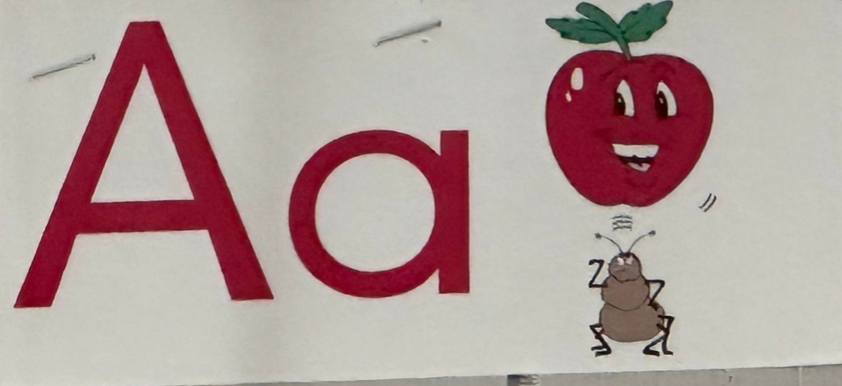
The second one I really appreciated that it had both the upper and lower case symbols and had two images of items that start with that letter to promote phonemic awareness.
3. Décor

A poster to support and promote literacy in the classroom!

This classroom did not have a word wall; however, it had this wonderful sound wall that was referred to multiple times throughout the lesson. I was unfamiliar with how sound walls worked so I looked into this further and found a helpful resource called Reading Rockets. It explains how sound walls focus on teaching students the phonemes (sounds within words) to help promote literacy (Reading Rockets, 2024). This website has a wonderful video from Mary E. Dahlgren, Ed. D., who shares the differences between word and sound walls and the benefits that sound walls bring into the classroom.
4. Other Takeaways

- Class novel studies: “The World According to Humphrey” is a novel the class was working through. I have not yet observed a novel study in the Elementary grades so I loved seeing this done and learning strategies to support it. Key takeaways:
- Ask students to reflect and share with the class where you left off.
- Always tell students what page you are beginning to ready on and whenever you flip a page so they can follow along.
- Pause to ask comprehension questions throughout reading the novel.
- Support students’ literacy in a novel study by asking the following questions: would anyone else like to read?, who can take a guess at what will happen next? (emphasize there are no wrong answers), what does ___ (word)____ mean?, can you sound out the word? (if students get stuck), and please use your bookmark to follow along. These are just a few tips I learned today!
- Provide follow up comprehension/writing lesson. This is a great way to assess students writing in the classroom.
2. Scheduling Reading/Writing
- Literacy circles: Try to schedule these first thing in the morning. This is a great way to try and include families who can and are willing to help in the classroom. If it is first thing in the morning, often families can help before they go to work. Allow them to work with thriving students while the teacher works with the striving group.
- Have a soft start followed by reading and writing. The writing followed by the reading allows the teacher to assess their comprehension immediately after reading or literacy circles.
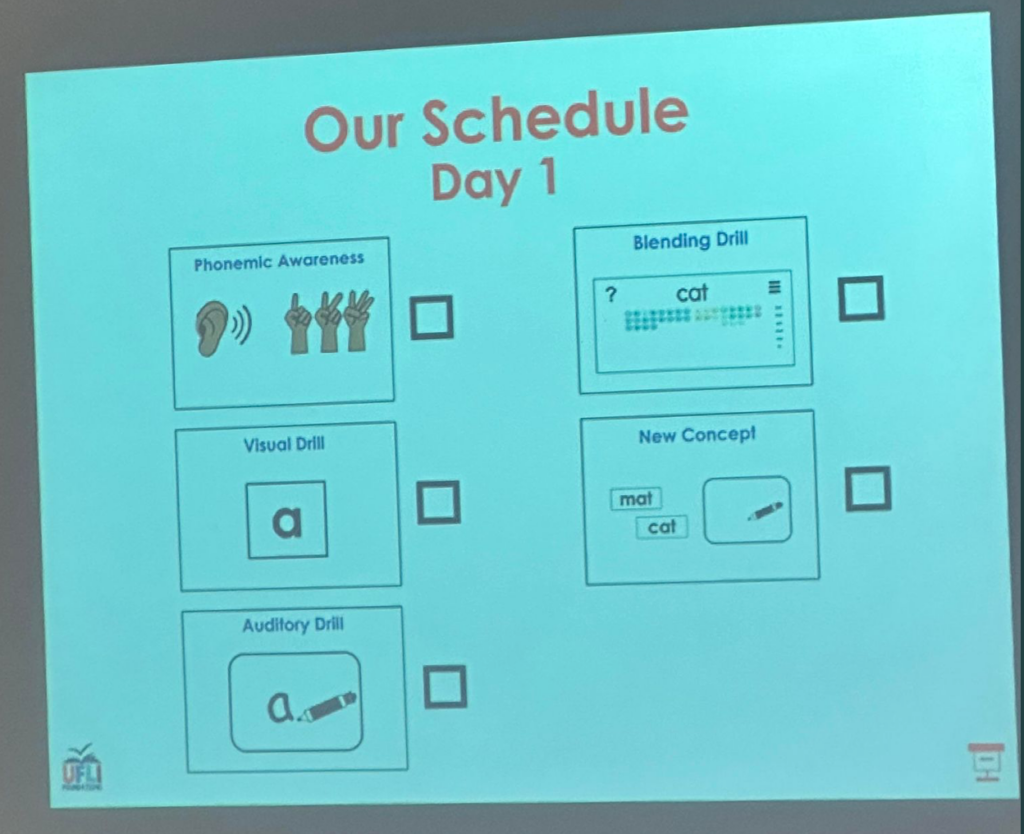
3. Incorporating UFLI
- UFLI stands for the University of Florida Institute of Literacy
- The website has a ton of free resources, including a UFLI foundations course and toolbox for free! (This is something I would like to take over the summer).
- Below is a photo from the UFLI website that explains a research-based formula to reading comprehension. UFLI is the “D” or “Decoding” piece of this puzzle (UFLI, 2024).
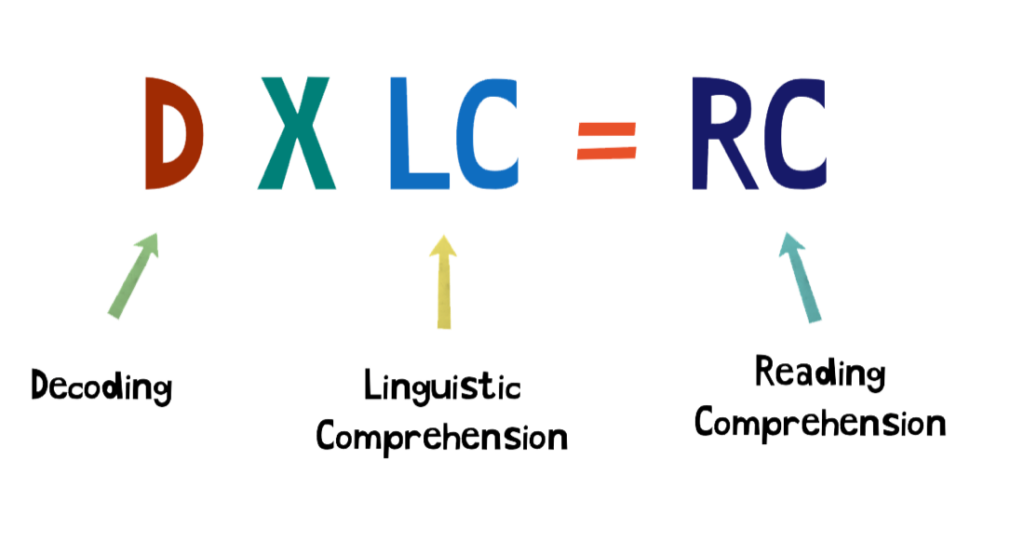
My Dream Future Classroom
Last semester in my classroom management class, I had the opportunity to take time to research how I plan to set up my future classroom library to promote literacy. My research is as follows:
A classroom library is incredibly important in maximizing
learning. This is confirmed in the Journal article “Building an
Effective Classroom Library” which emphasizes that “…students
in classrooms with high-quality classroom libraries read 50
percent more than students who do not have access to a library in
the classroom” (Captapano et al., 2009, p. 60). They also suggest
that high-quality classroom libraries “…generate interest and
motivation for reading, support differentiated instruction through
better matching of students with texts and provide the means to
the practice necessary to develop expert reading skills” (Captapano et al., 2009, p. 60). Realizing the importance of a high-quality student library to learning I used this article to gain knowledge of how to build one. Captapano et al., provides a great checklist of things to consider when building a classroom library that I took into consideration in my design (2009).
The first step is to have lots of shelving and find books to stock the library (Captapano, 2009). After designing the bookshelves, you have to fill them. This is an expensive feat for a beginning teacher. With this in mind over the past two years, I have been going to yard sales and thrift stores to pick up good quality used books for a low cost and creating an Amazon wish list of the books I have not yet purchased.
Next, it is critical to have a good organizational system to keep
the library running smoothly (Captapano, 2009). To do this I plan to
colour code books by genre and not by reading ability (leveling).
The reason I have decided to not level my library is because of the
research that levelling is variable and inconsistent, it is limiting to
what information students engage with, and it can detract from the
teacher’s desire to encourage students to choose books based on
their personal interests (McGuire, 2023). *I am now re-thinking this after our classroom visit. I look forward to learning more about what book levelling means and how it can promote literacy in the classroom*, Another element to consider is when to open the classroom library. Research suggests waiting until the second week of school to build student excitement and take time leading up to the opening to show students how the bins and labelling systems work and break into groups to discuss what they notice (ie, books are well-taken care of) (Captapano et al., 2009, p.67). A critical piece is establishing a checkout and return system. Creating a checkout and return system that is student- led is critical to making it easy to manage (Captapano et al., 2009, p. 68). A system that has proved efficient is having a binder with sign-out sheets for each student. On the sheet, it will have a place for students to write the title, author, genre, colour level, and sign out/ sign in date (Captapano et al., 2009, p. 68). To support the inclusion of all students through universal design for learning, I can give everyone the option to use decorated clothespins or paint stirrers to place in the spot where they retrieve a book from so they can easily re-stock it upon finishing the book (Captapano et al., 2009, p. 68).
Reshelving books can become an easy process now that students already understand the color-coded genre system or use of their clothespin or paint stirrer. To prevent congestion in the library, it is suggested to have a returns bin (item #43) (Captapano et al., 2009, p. 69). The returns bin can then be checked by a few students who are the re-shelvers and “book doctors” which are jobs students can rotate through each week (Captapano et al., 2009, p. 69). It is also emphasized that even with a well-organized classroom library it is important for a teacher to “teach, review, and reteach the organization system, strategies for text selection, and procedure for reshelving at various points throughout the year” (Captapano et al., 2009, p. 71). It is also suggested to take “…informal anecdotal notes on two or three students per day to monitor a student’s ability to make good selections, read for understanding, care for materials, respond to literature through discussion or reviews, and make recommendations” (Captapano et al., 2009, p. 70).
My dream future classroom library would look something like this photo I found on Pinterest by Molly Maloy. I would just add some flexible seating, headphones, and a poster with tips to help with reading (ie. like the bookmarks in our reading kit!).
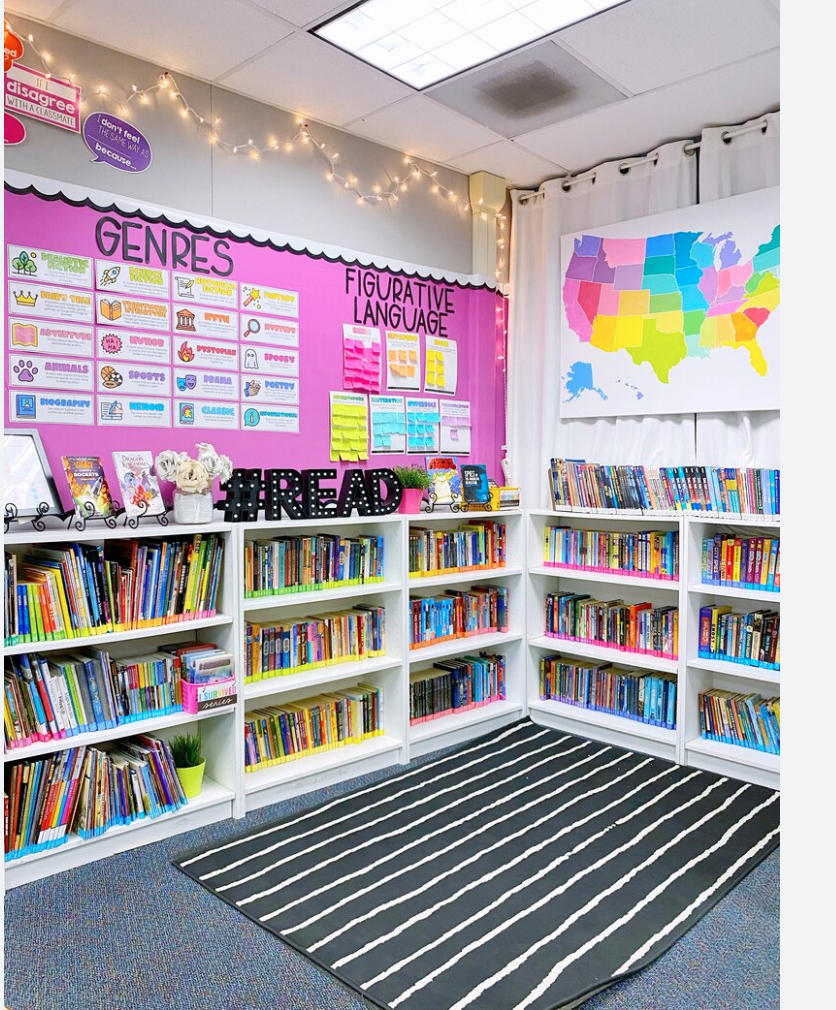
From visit this class I now realize that promoting literacy through classroom set up is more than just having a classroom library. I would also want to include
- Wordwall/ sound wall
- Instructional posters
- alphabet with corresponding images
- Tables to host literacy circles
- Extra box of bookmarks for students
- Mini whiteboards for literacy lessons
Conclusion
My dream future classroom library would look something like this photo I found on Pinterest by Molly Maloy. I would just add some flexible seating, headphones, and a poster with tips to help with reading (ie. like the bookmarks in our reading kit!).

Thank you for following along on my literacy/reading course journey!
-Chelsea
References
By: Marjorie Bottari. (n.d.). Transitioning from word walls to sound walls. Reading Rockets. https://www.readingrockets.org/topics/phonological-and-phonemic-awareness/articles/transitioning-word-walls-sound-walls
Catapano, S, Fleming, J., & Elias, M. (2009). Building an effective classroom library. Journal of Language and Literacy Education [Online], 5(1), 59-73.
McGuire, B. (2023, June 15). Classroom Library Organization: The Problem with Leveling. American College of Education. https://ace.edu/blog/classroom-library-organization-the- problem-with- leveling/#:~:text=Leveling%20detracts%20from%20the%20things,that%20are%20of%20p ersonal%20interest.
Resources. UF Literacy Institute. (n.d.). https://ufli.education.ufl.edu/resources/
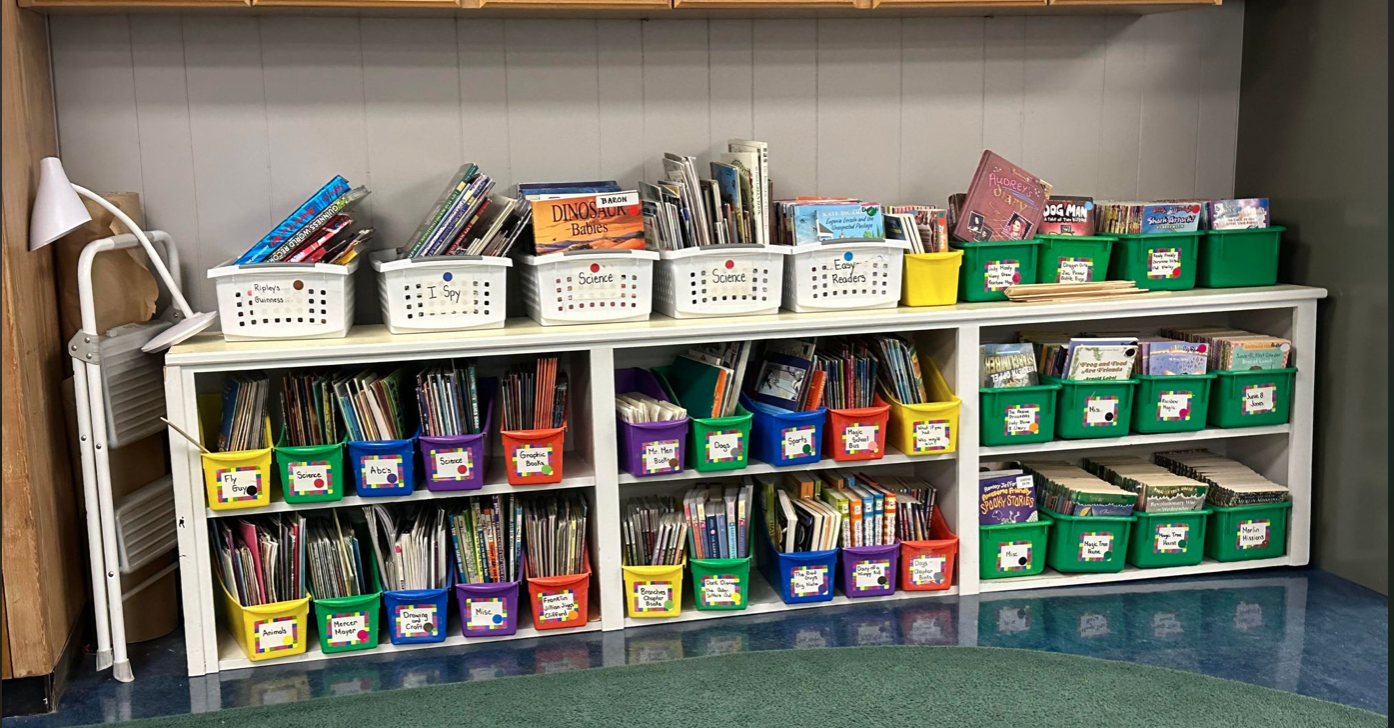
Leave a Reply
You must be logged in to post a comment.